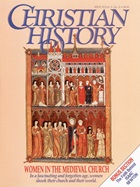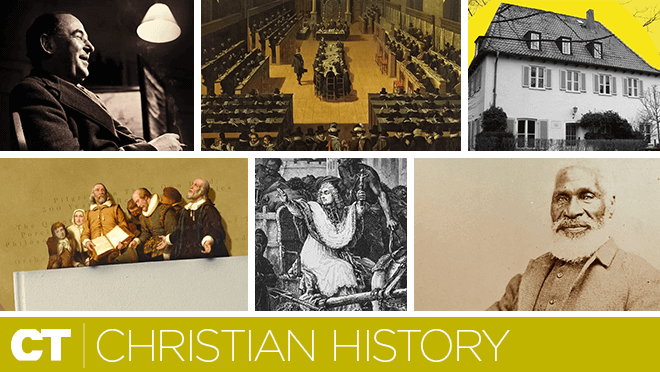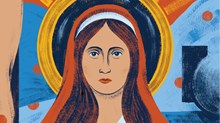Women in the Medieval Church
450–523: Brigid of Ireland founds Ireland’s first nunnery and spreads Christianity there
475-545: Clotilde, Queen of the Franks, converts her husband, King Clovis, who lays the foundation of the French nation
500–547: Theodora I, co-empress of Byzantine Empire, helps bring moral reform
518–587: Radegunde, Queen of the Franks, maintains her faith despite King Clothaire’s adulteries and his murder of her brother; later she founds a key monastery
614–680: Hilda of Whitby founds an English monastery that trains five bishops; she hosts significant Synod of Whitby in 663
700–780: Lioba helps Boniface to convert the Saxons; founds abbey in Germany; invited to court of Charlemagne
fl. 840: Dhouda of Septimania writes a manual on feudal and religious conduct, urging her son to practice charity and serve the king and the church
932–1002: Hrotsvit composes the first known dramas in church history
1046–93: Queen Margaret of Scotland vigorously reforms the church
c. 1083–c. 1150: Anna Comnena writes an important history of the Byzantine Church and Empire of her day
c. 1097–c. 1161: Christina of Markyate overcomes obstacles to live life of prayer and poverty; influences abbot of St. Albans toward holiness
1122–1204: Eleanor of Aquitaine rules one-third of France; later co-rules, with Henry II, half of France and all England; joins crusade to Holy Land; financially supports Fontrevault Abbey
1188–1252: Blanche of Castile, Queen of Louis VIII of France, wins dispute with French bishops; performs acts of charity
1194-1253: Clare of Assisi renounces wealth; founds Order of Poor Clares; gains from pope right to maintain absolute poverty; helps save Assisi from being sacked
1207–1231: Elizabeth of Hungary, a noblewoman, ministers to the poor and establishes hospital
c. 1210–c. 1280: Mechthild of Magdeburg criticizes church corruption and writes Flowing Light of the Godhead
c. 1248–1309: Angela of Foligno devotes herself to prayer and austerity in Franciscan Third Order; writes Experience of the Truly Faithful
1256–1302: Gertrud the Great, after conversion at age 25, leads life of contemplation; writes Messenger of Divine Kindness
1303–1373: Bridget (Birgitta) of Sweden, widowed after 30 years of marriage and eight children, founds order, gives to poor, writes, and urges papal reform
1343–c. 1423: Julian of Norwich lives enclosed life of prayer; writes Revelations of Divine Love
1347–1380: Catherine of Siena devotes herself to prayer; helps lepers and prisoners; urges pope to return to Rome; writes Letters and Dialogue
1366–1394: Agnes of Bohemia, betrothed to Emperor Frederick II, founds monastery
1373–1439: Margery Kempe undertakes pilgrimages and writes first known autobiography in English
1412–1431: Joan of Arc, following supernatural “voices,” leads besieged French forces to victory; burned at stake on charges of heresy; later declared innocent
Church and World Events
455: Vandals sack Rome
476: Last Roman emperor in the West
529: Justinian codifies Roman law
540: Benedict writes monastic Rule
590–604: Pope Gregory I, the Great
596: Augustine sent to convert English
622: Mohammad’s hijra marks birth of Islam
711: Moslems cross into Spain
718: Boniface’s mission to the Saxons of Germany
731: Bede writes Ecclesiastical History of the English
732: Charles Martel limits Moslem expansion at Tours
800: Charlemagne Holy Roman Emperor
843: Treaty of Verdun divides Charlemagne’s kingdom
863: Cyril and Methodius lead mission to Slavs
885: Vikings besiege Paris
910: Monastery at Cluny founded
911: Vikings given land for settlement; leads to foundation of Normandy
962: Otto I crowned Holy Roman Emperor
988: Vladimir, Grand Prince of Kiev, baptized
995–1030: Olav brings Christianity to Norway
1001–28: Stephen, King of Hungary, converts this people to Christianity
1054: East-West Schism
1066: Battle of Hastings; William of Normandy King of England
1071: Battle of Manzikert marks ascendancy of new group of Moslems
1073–85: Pope Gregory VII reforms church
1093: Anselm becomes Archbishop of Canterbury
1095: Pope Urban II calls for crusade
1115: Bernard of Clairvaux founds monastery
1122: Concordat of Worms, compromise in church-state feuds
c. 1141: Gratian’s Decretum, basis for medieval church law
1142: Abelard dies
c. 1150: Medieval universities begin
1152–90: Frederick Barbarossa rules Holy Roman Empire (Germany)
1170: Thomas á Becket assassinated
1204: Fourth Crusade; sack of Constantinople
1208: Francis of Assissi renounces wealth
1215: Magna Carta confirmed by King John
Innocent III calls Fourth Lateran Council, which affirms transubstantiation, condemns Waldensians
1220: Dominic founds order
1271–1295: Marco Polo travels to China
1272: Aquinas’s Summa Theologiae
1291: Fall of last crusading territory in East
1302: Unam Sanctamproclaims no salvation outside the church
1309: Papacy “exiled” to Avignon
1321: Dante’s Divine Comedy
1337–1453: One Hundred Years’ War
1347: First wave of Black Death
1378: Great Papal Schism yields multiple popes
1380: Wyclif supervises English Bible translation
1414: Council of Constance ends Papal Schism; condemns Hus
1418: Thomas à Kempis's Imitation of Christ
c. 1450: Gutenberg's press
Dr. Thomas O. Kay is Chair of the Department of History at Wheaton College in Wheaton, Illinois.
Copyright © 1991 by the author or Christianity Today/Christian History magazine.
Click here for reprint information on Christian History.

Support Our Work
Subscribe to CT for less than $4.25/month





























